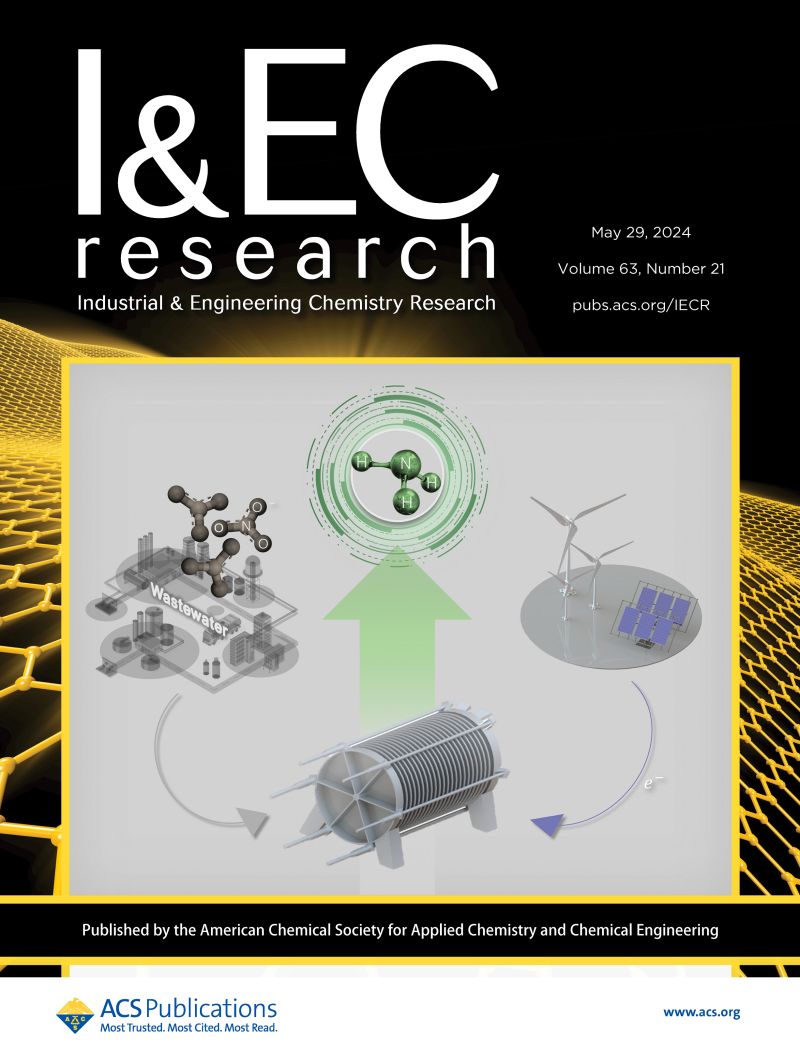Coupling Achiral and Chiral Chromatography for Efficient Separation of Enantiomeric Mixtures
IF 3.8
3区 工程技术
Q2 ENGINEERING, CHEMICAL
引用次数: 0
Abstract
Chiral chromatography (CCh) is often a cost driver in the large-scale separation of enantiomers. To improve the economics of the separation process, we developed the concept of coupling CCh with achiral chromatography (ACh). In this concept, the CCh step is used to enrich the enantiomeric mixture with the target enantiomer, while in the ACh step, the enriched mixture is separated to obtain the product with a desired purity. The ACh separation is driven by the phenomenon of self-disproportionation of enantiomers (SDE), which relies on formation of homochiral and heterochiral associates that can be separated in an achiral environment, whereas the CCh separation occurs in the presence of a chiral stationary phase (CSP). The coupled ACh-CCh process is operated in a cyclic mode for which cyclic steady state is attained. To demonstrate the concept of the process and develop a generic methodology for its design, a model mixture consisting of enantiomers of methyl p-tolyl sulfoxide was used, with S-p-tolyl sulfoxide as the target enantiomer. For both ACh and CCh, the influence of the operating variables, including mobile phase composition, loading density, and enantiomeric excess (ee) of the feed mixture, on the separation performance was examined. On the basis of the experimental data, a dynamic model was formulated, calibrated, and used to support the process design and assess the performance of both the standalone ACh and CCh as well as their coupling in various configurations. The amount of product obtained in a single cycle of ACh-CCh was markedly higher compared to that obtained in the standalone CCh, which provided the benefit of reducing consumption of the costly CSP. This benefit was enhanced with increasing ee of the feed mixture. For example, for racemic mixtures, the mass of the product per cycle of ACh-CCh was 1.5 times higher, for mixtures with ee = 70% it was 4 times higher, and for mixtures with ee = 85% it was 5.7 times higher compared to the standalone CCh. Furthermore, for mixtures with a high ee, a marked improvement in process productivity was obtained, e.g., for mixtures with ee = 70%, the productivity of ACh-CCh was twice higher, for ee = 85% it was 2.5 times higher compared to the standalone CCh.

耦合非手性色谱和手性色谱,高效分离对映体混合物
本文章由计算机程序翻译,如有差异,请以英文原文为准。
求助全文
约1分钟内获得全文
求助全文
来源期刊

Industrial & Engineering Chemistry Research
工程技术-工程:化工
CiteScore
7.40
自引率
7.10%
发文量
1467
审稿时长
2.8 months
期刊介绍:
ndustrial & Engineering Chemistry, with variations in title and format, has been published since 1909 by the American Chemical Society. Industrial & Engineering Chemistry Research is a weekly publication that reports industrial and academic research in the broad fields of applied chemistry and chemical engineering with special focus on fundamentals, processes, and products.
 求助内容:
求助内容: 应助结果提醒方式:
应助结果提醒方式:


